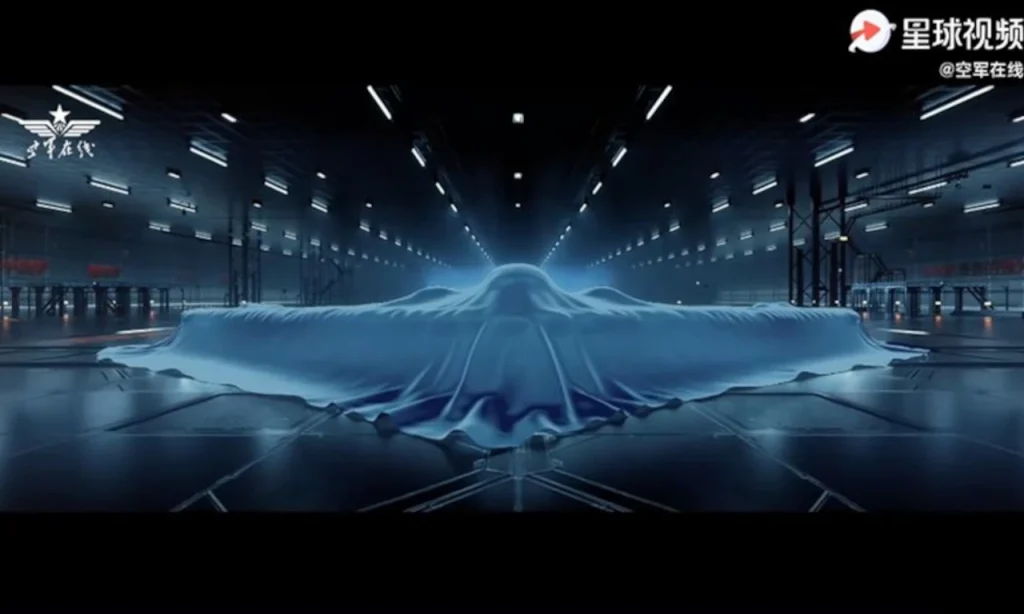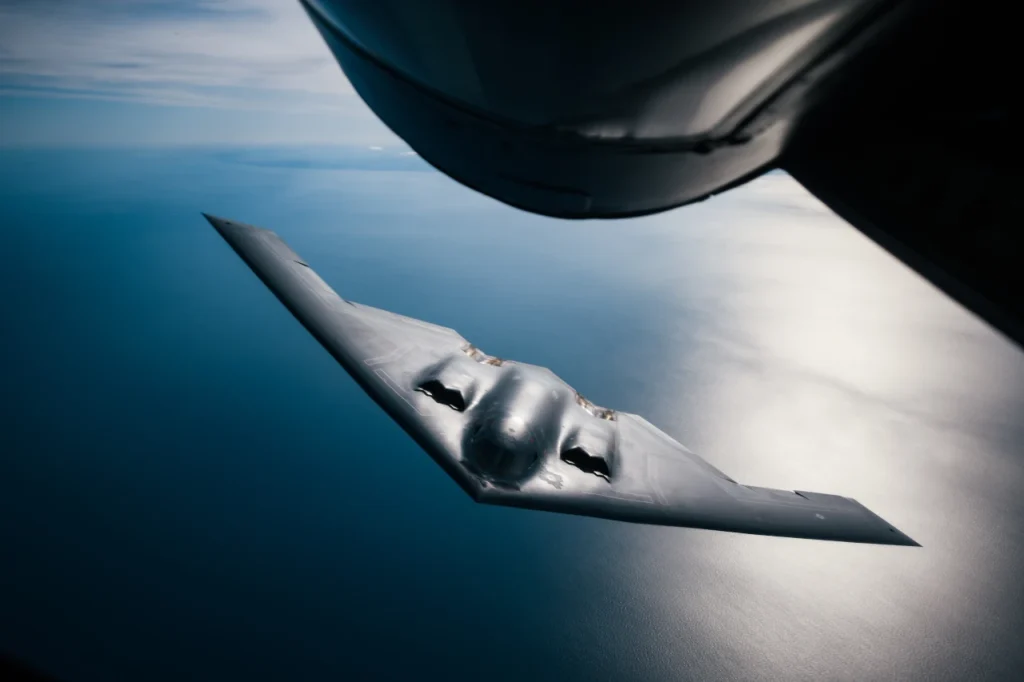According to an article published in China’s pro-government daily Global Times in July this year, “flight tests of an important type of aircraft of huge strategic and historical value” were about to take place. The primary image for this piece is a big aeroplane with a canopy over it that appears to be an American B-2 Spirit. It would appear that China is getting ready to conduct the first flight tests of its newly developed stealth strategic bomber, the H-20.
The photograph is grabbed from a recruitment video for the Chinese Air Force in the year 2021; however, it is only partially apparent whether the picture depicts a real aircraft.

The planned flight tests of the aircraft of “strategic and historical importance” were touched on by Ge Heping, who is the head of the flight test centre of the Chinese company AVIC (Aviation Industry Corporation of China). However, neither the kind nor the aircraft type was detailed in the report.
According to anecdotal remarks made on the Chinese Internet, which were mentioned in the post on the pro-government website Global Times (articles are endorsed by Chinese government officials in line with state-run propaganda), Heping is referring to the new H-20 bomber. It is speculated that it is the guise in which the American B-2 Spirit or the most recent B-21 Raider might seem.
In the same article, The Global Times cites an “unnamed Chinese expert” who says that “given all the official indications, public speculation that the new aircraft could be the H-20 makes sense, but it may just be an overinterpretation.” The expert says, “given all the official indications, public speculation that the new aircraft could be the H-20 makes sense.”
The Chinese H-20 bomber has been the subject of much discussion for quite some time. It is the final major aircraft in China’s “20-series,” which has already produced the J-20 stealth tactical combat aircraft, the Y-20 medium transport aircraft, and the Z-20 multi-role helicopter. This aircraft is the only multi-role helicopter in the “20-series.”
The H-6K is the only strategic bomber that China currently has in its arsenal. It is a heavily reconstructed and thoroughly updated version of the original Chinese H-6 bomber. However, the design is based on an older Soviet bomber called the Tu-16.
An article published in Aviation Week discusses a gathering of Chinese military authorities that took place seven years ago, during which they concluded that the Chinese Air Force requires a new generation of strategic bombers. In 2016, General Ma Xiaotian, who was serving as the commander of the Chinese Air Force at the time, gave public confirmation that the H-20 was being developed. AVIC also dropped hints about creating a new bomber in a promotional video released in May 2018. Last but not least, in a study sent to Congress four years ago, the Pentagon stated that the H-20 would enter service within the next ten years.
The next American bomber, the B-21 Raider, is scheduled to debut in December. Nevertheless, in a matter of days, the well-known Chinese air show Zhuhai Airshow will get underway in Zhuhai (Zhuhai). Speculation has it that Beijing plans to utilise the display to leapfrog Washington and be the first to introduce the new strategic bomber.
Also, according to a press spokesperson for the Chinese Air Force, an aircraft of the “series 20” class that has never been seen before and is capable of “long-range strategic deliveries” would appear at the display. However, Aviation Week’s Steve Trimble suggests that it could be a Y-20U (YY-20) refuelling aircraft, the shape of which has already been analysed and characterised. After all, it is customary for the Chinese air force to unveil new aircraft and air defence systems to the public several months or even years after visible evidence of their presence have been uncovered.
For instance, the visible confirmation of the existence of J-20 fighters did not occur until 2012, and the first public display of these aircraft took place in Zhuhai in 2016. It took a total of two years to complete the Y-20 cargo aircraft.
The H-20 bomber is often regarded as the American B-2 Spirit’s alter ego – that is a stealth aircraft with subsonic wings capable of using conventional and long-range nuclear weapons. The Chinese bomber will have a range of up to 8,000 kilometres, according to the American spy agency DIA (Defense Intelligence Agency). It will also use an AESA (Active Electronically Scanned Array) radar to detect threats such as enemy missiles and planes. The H-20 is scheduled to be operational by the end of this decade.

The H-20’s primary mission will be nuclear strikes. It is the final missing link of China’s nuclear triad. On the one hand, the H-20 bomber will boost China’s nuclear deterrence capability; on the other, and it will provide Beijing with a tool for “strategic nuclear signalling.” While nuclear submarines, like nuclear missiles disguised in ground forces, must operate invisibly, strategic bombers can be employed to undertake training and demonstration missions worldwide. In China, it might be either the Pacific or the Indian Ocean.
The Chinese H-20, along with the Y-20U tankers, can even conduct a mock raid on the Hawaiian Islands… After all, the Hawaiian Islands are over 8,000 kilometres from the Chinese shore. And even if the H-20 misses US aircraft carriers (which appears unlikely) and US ships equipped with anti-aircraft systems, the Americans will be unable to halt Chinese bomber flights to Hawaii. Similarly, the H-20 can fly near the islands of Guam, over the coasts of Australia and India, but also in the airspace of friendly Pakistan and, at times, Kazakhstan.
It will be Chinese “strategic signalling” not only to the US but also to America’s regional allies. In this approach, China will demonstrate to America’s allies that they cannot rely on the Americans and that it is in their best interests to reach an accord with China.
Suppose China and the US engage in a physical conflict. In that case, the H-20 will do what it was built to do: deliver conventional or strategic nuclear attacks on American locations in the Pacific Ocean.
